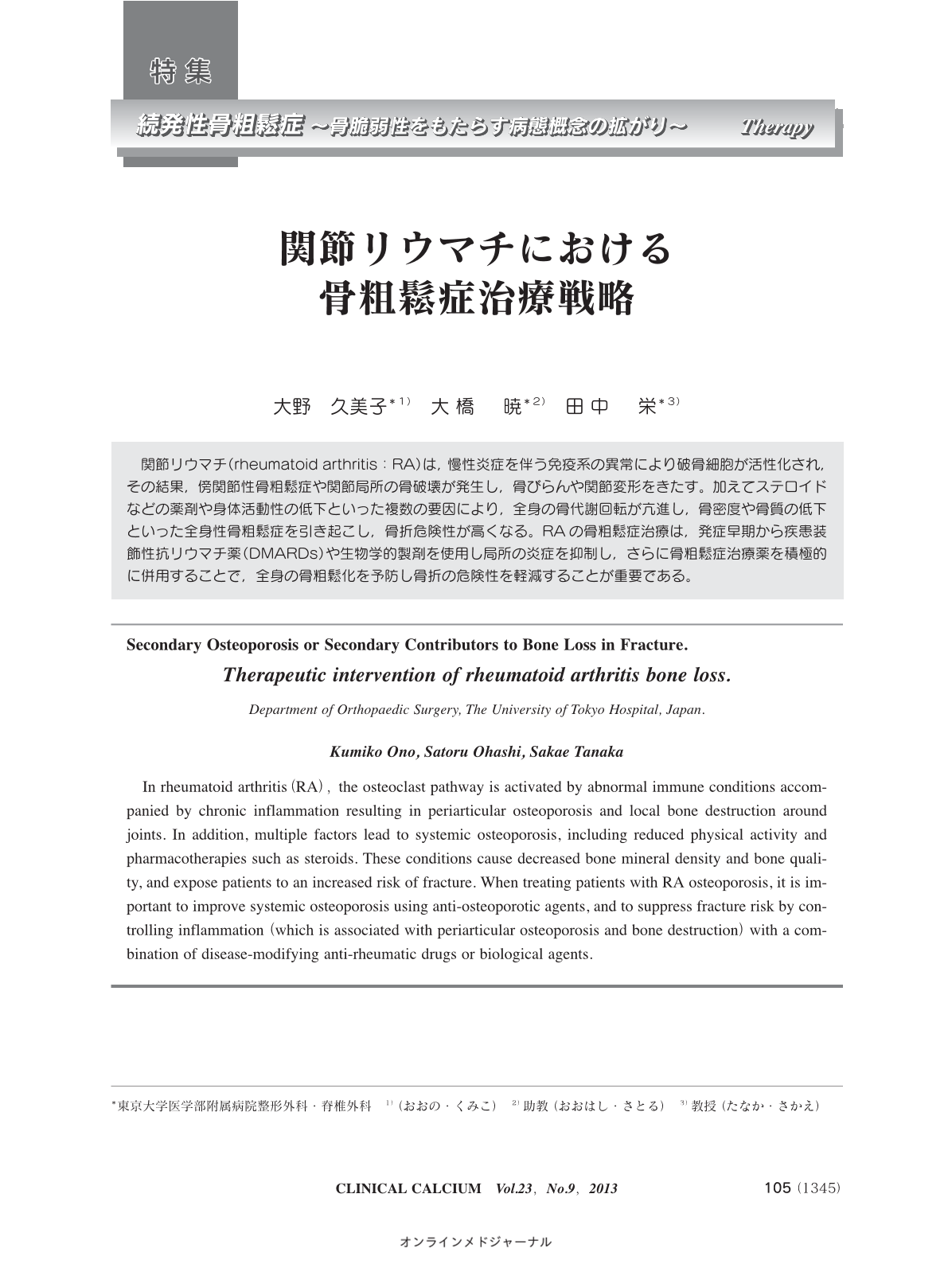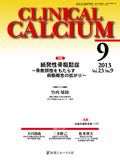Japanese
English
- 有料閲覧
- Abstract 文献概要
- 1ページ目 Look Inside
- 参考文献 Reference
関節リウマチ(rheumatoid arthritis:RA)は,慢性炎症を伴う免疫系の異常により破骨細胞が活性化され,その結果,傍関節性骨粗鬆症や関節局所の骨破壊が発生し,骨びらんや関節変形をきたす。加えてステロイドなどの薬剤や身体活動性の低下といった複数の要因により,全身の骨代謝回転が亢進し,骨密度や骨質の低下といった全身性骨粗鬆症を引き起こし,骨折危険性が高くなる。RAの骨粗鬆症治療は,発症早期から疾患装飾性抗リウマチ薬(DMARDs)や生物学的製剤を使用し局所の炎症を抑制し,さらに骨粗鬆症治療薬を積極的に併用することで,全身の骨粗鬆化を予防し骨折の危険性を軽減することが重要である。
In rheumatoid arthritis(RA),the osteoclast pathway is activated by abnormal immune conditions accompanied by chronic inflammation resulting in periarticular osteoporosis and local bone destruction around joints. In addition, multiple factors lead to systemic osteoporosis, including reduced physical activity and pharmacotherapies such as steroids. These conditions cause decreased bone mineral density and bone quality, and expose patients to an increased risk of fracture. When treating patients with RA osteoporosis, it is important to improve systemic osteoporosis using anti-osteoporotic agents, and to suppress fracture risk by controlling inflammation(which is associated with periarticular osteoporosis and bone destruction)with a combination of disease-modifying anti-rheumatic drugs or biological agents.



